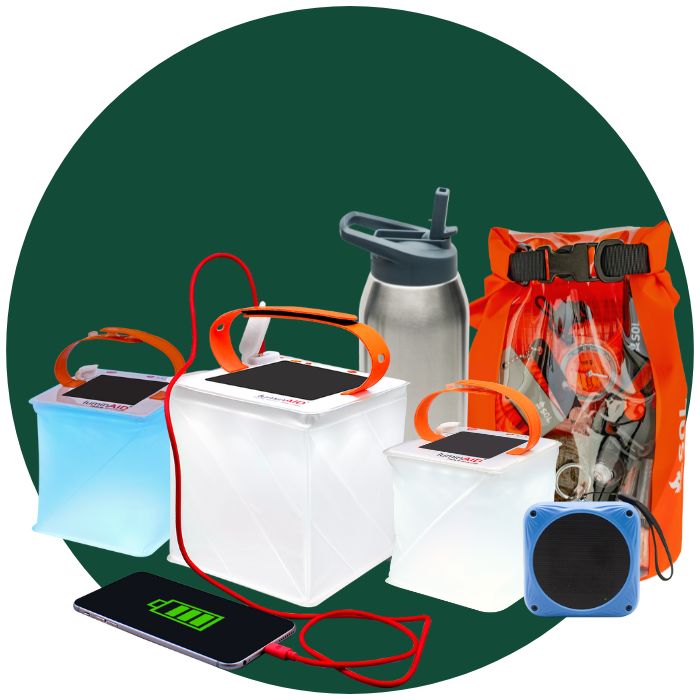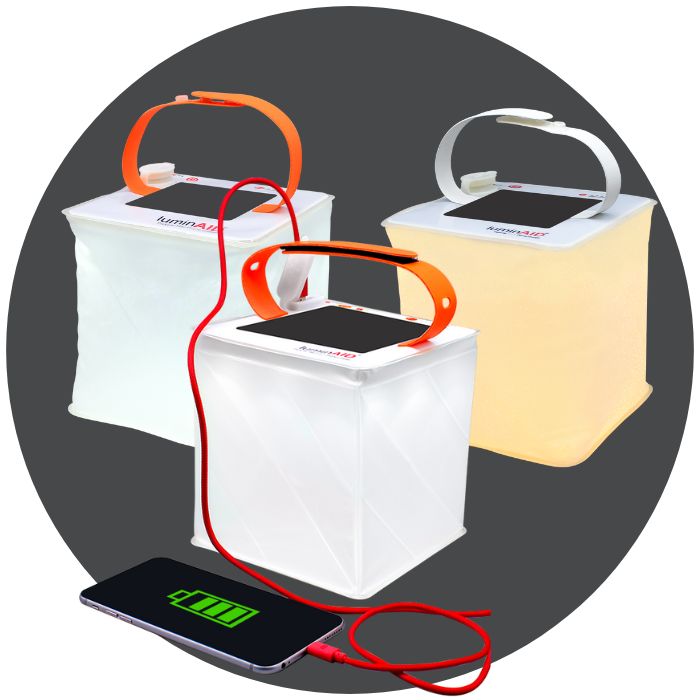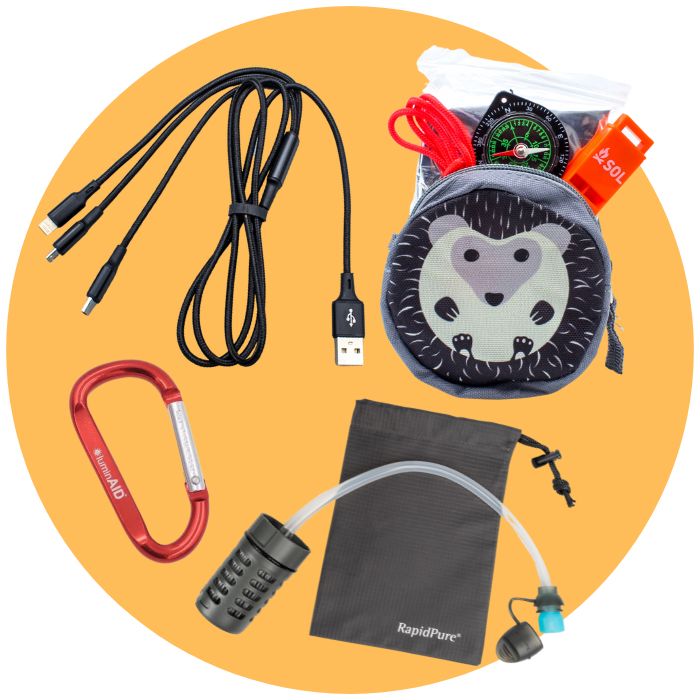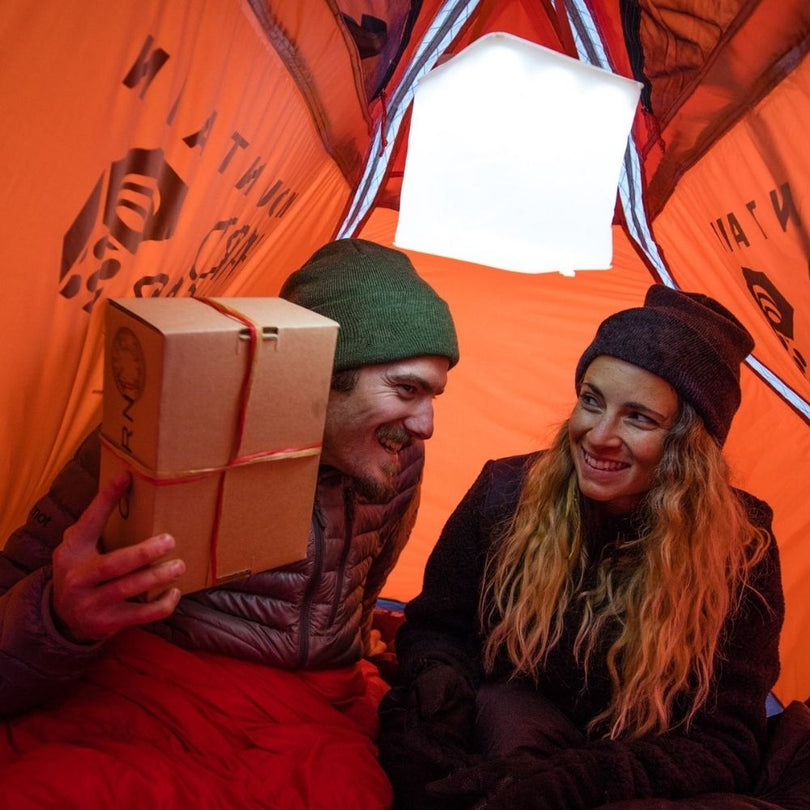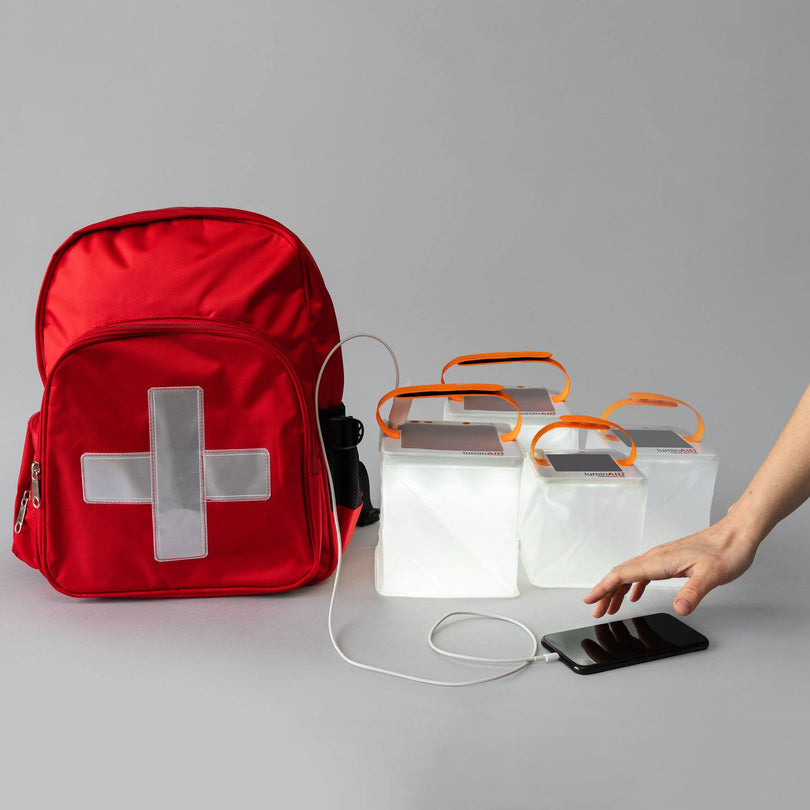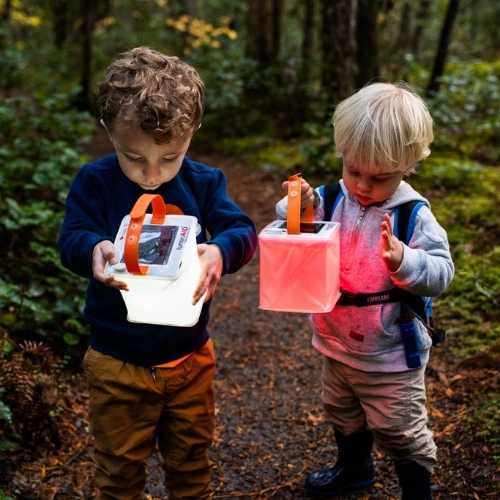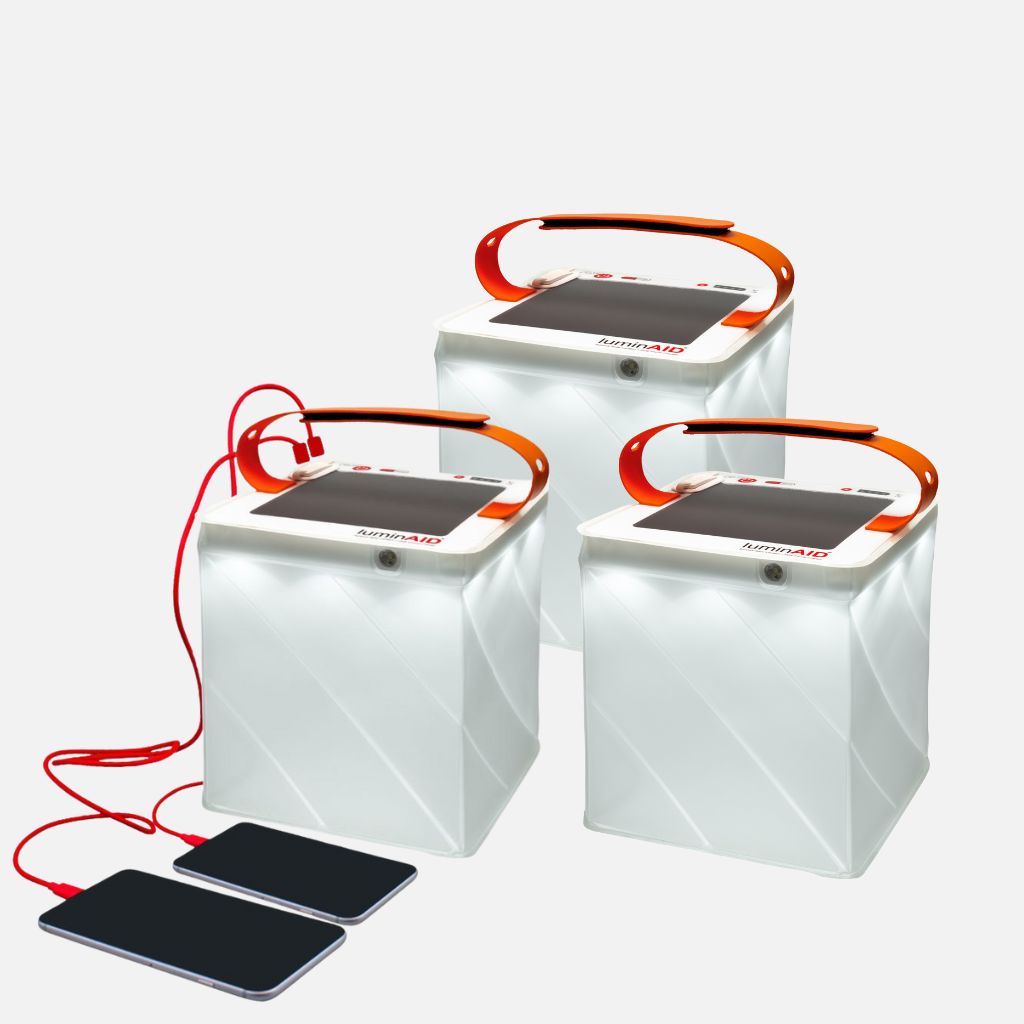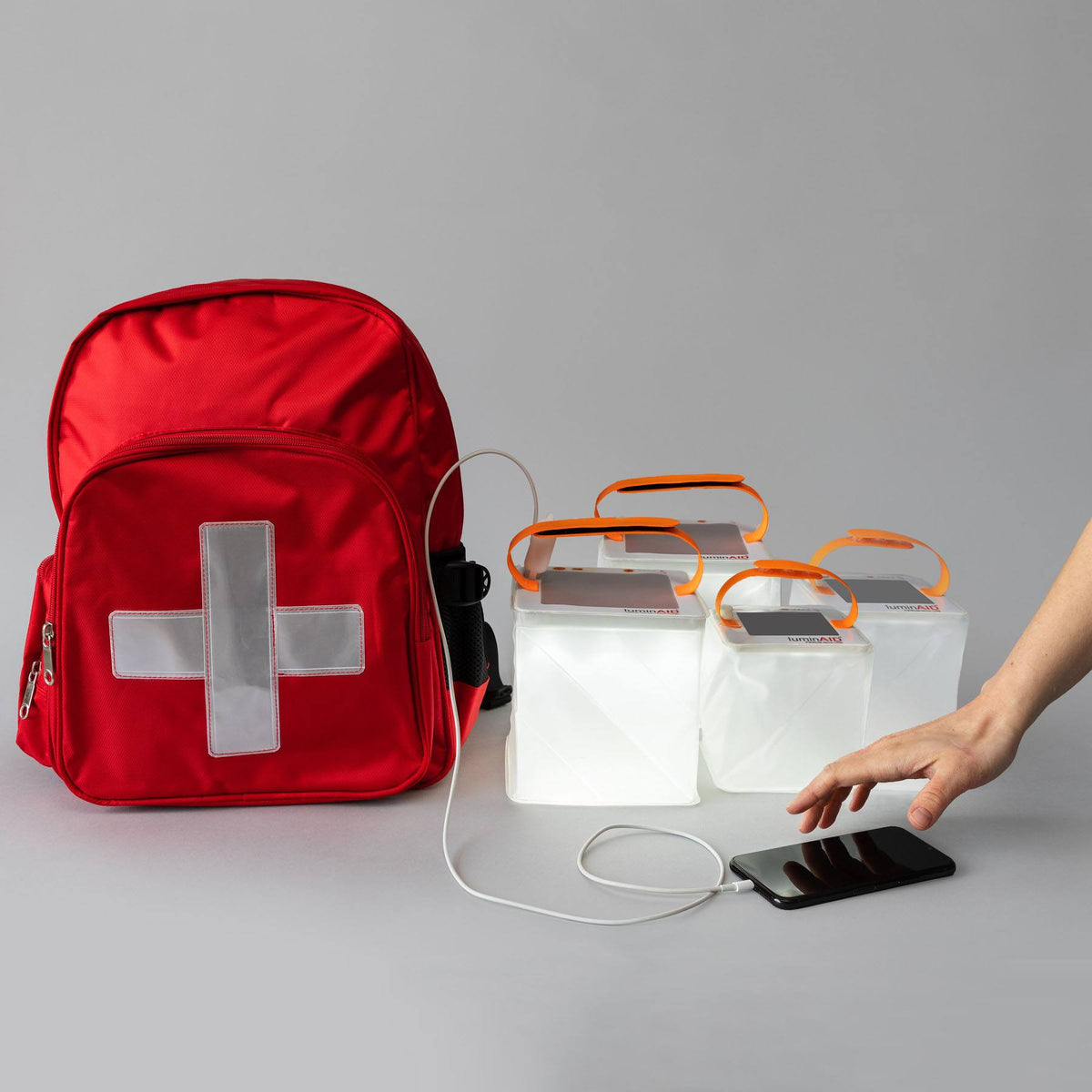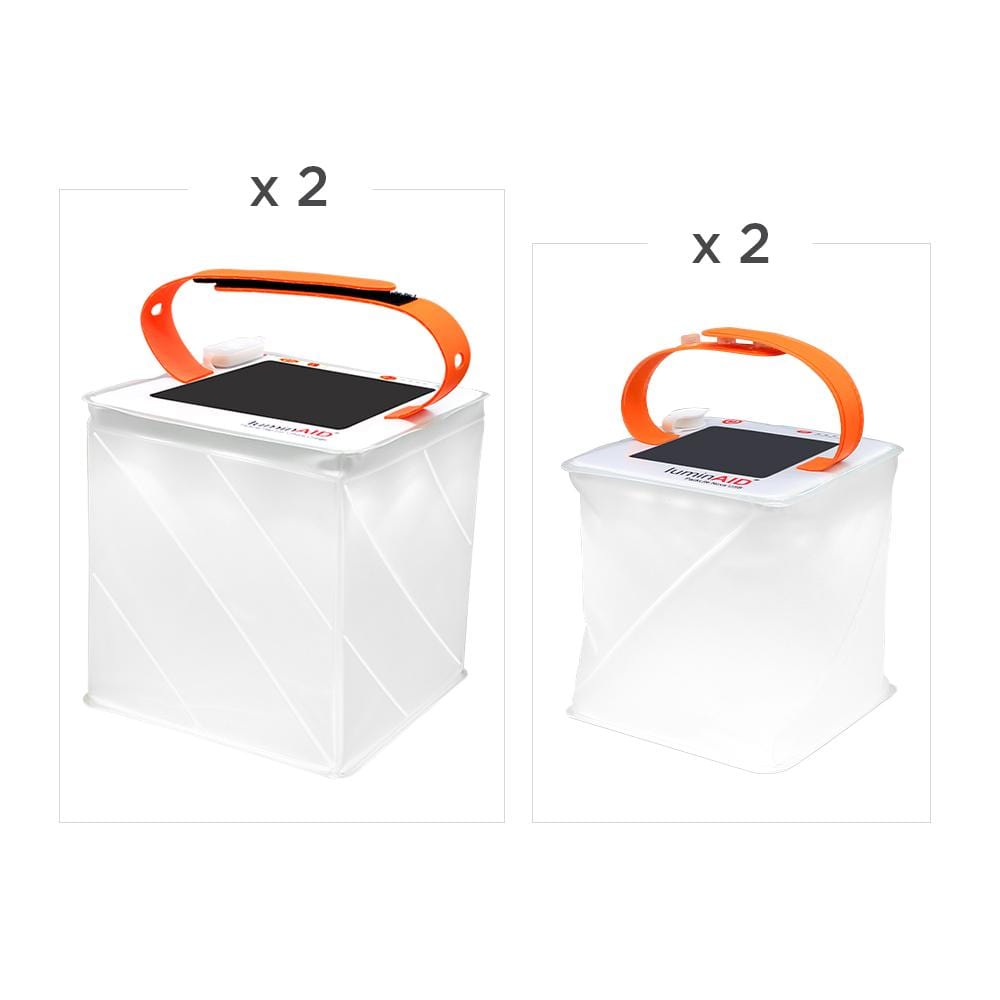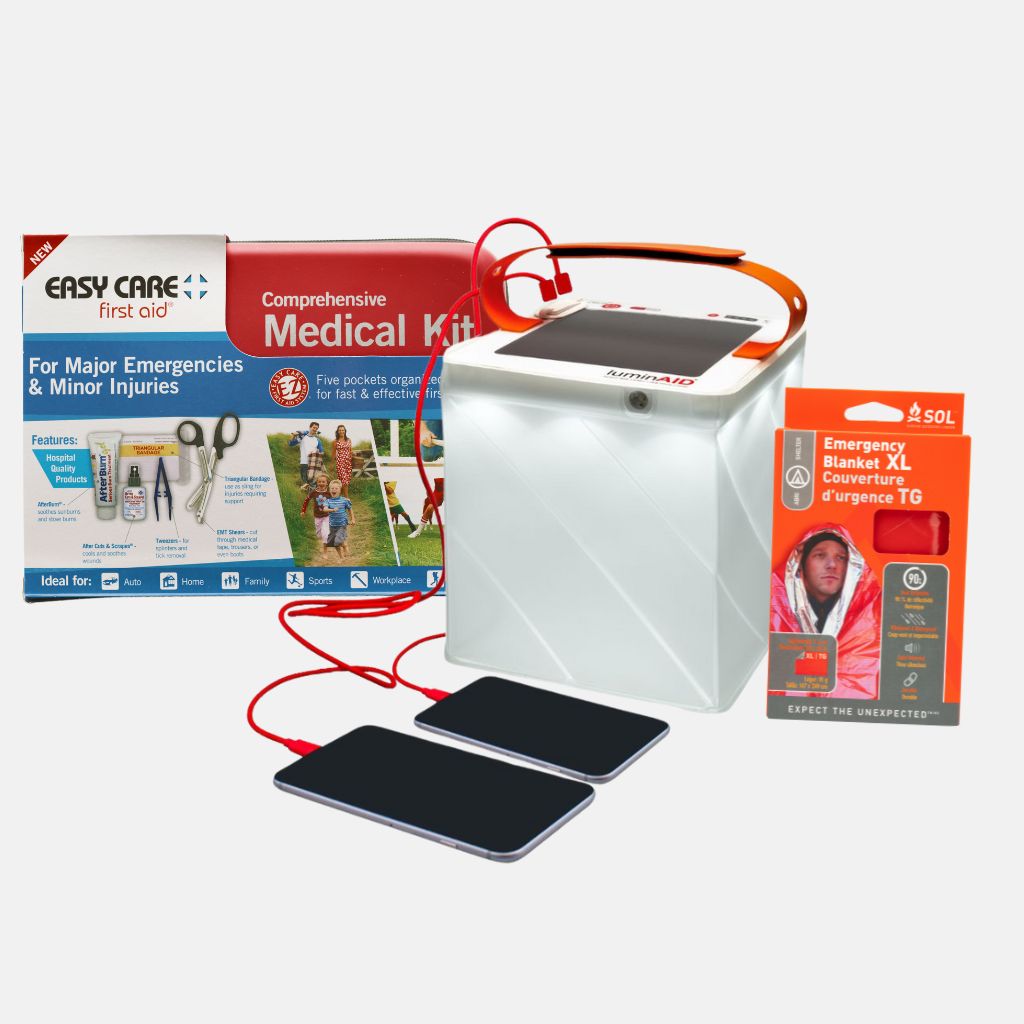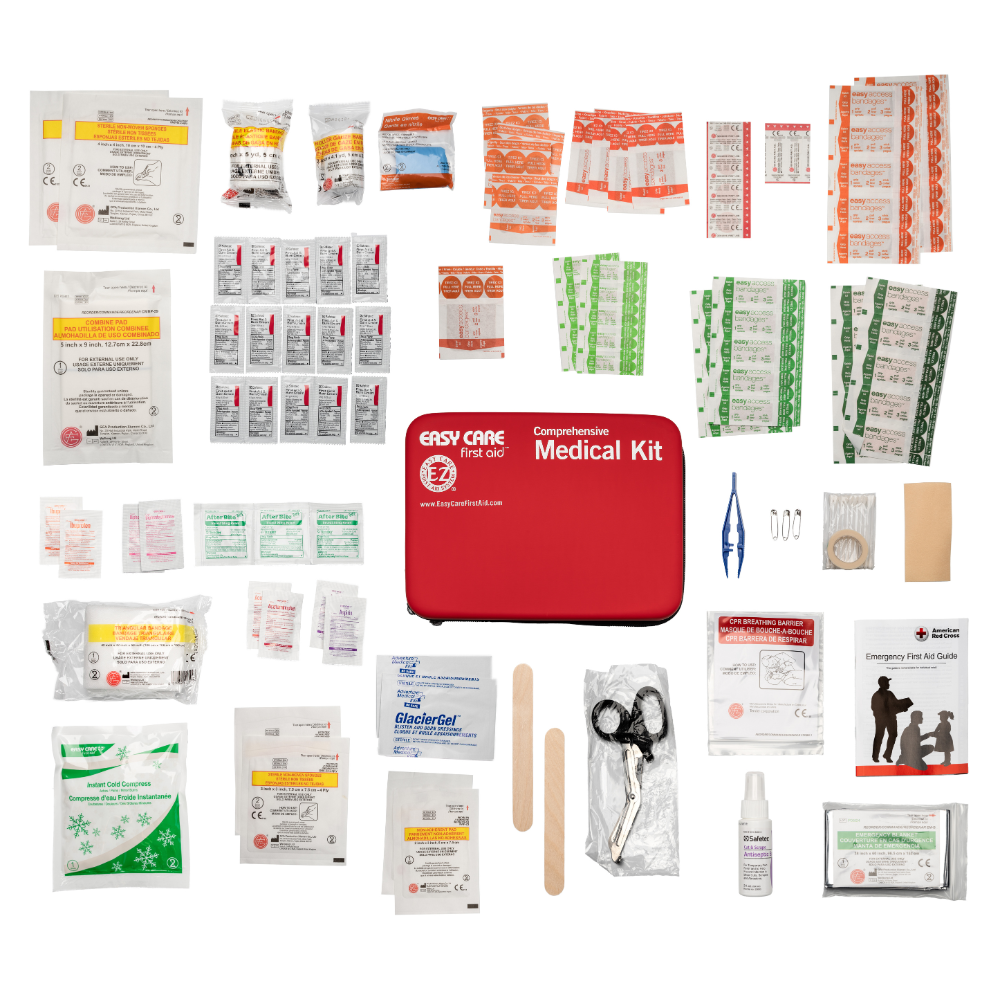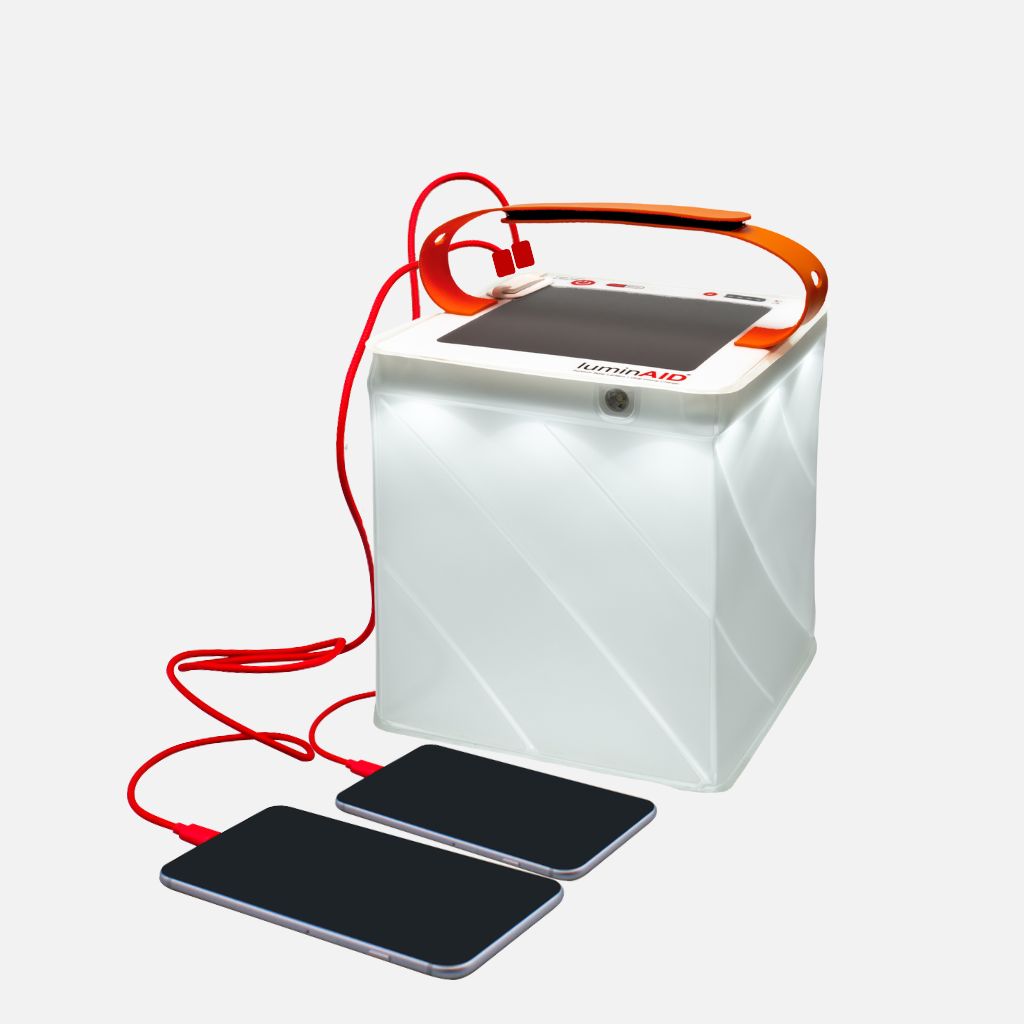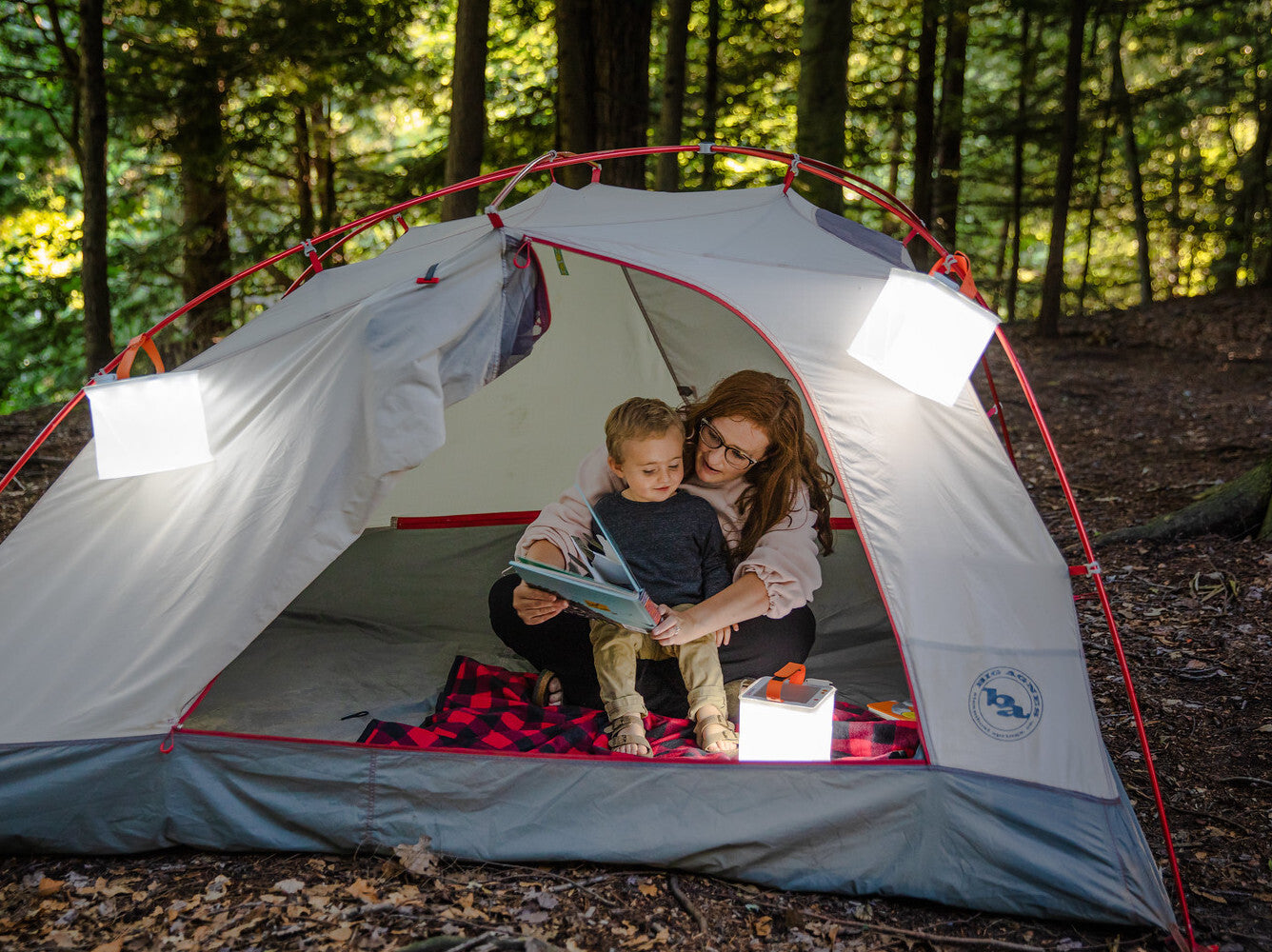The 2022 Hurricane Season lasts from June 1st to November 30th. Are you prepared for a hurricane? Not only is it important to have an emergency kit, it’s integral that you do some research to better understand the situations you may face.
Just like there are many physical precautions you can take against hurricanes, there are also things you need to know that are necessary for your safety in the event of a catastrophic storm.
This includes having a firm understanding of what a hurricane is, how hurricanes are predicted, and how to efficiently use each part of your emergency kit.
Hurricane Knowledge
Hurricanes are powerful storms that can cause extreme damage to both manmade structures and the surrounding environment.
Understanding how a hurricane behaves will help you best prepare your family and home for an impending storm. You need to know what to pack in an emergency kit, how to secure doors, windows, and roofs, and whether it’s a better idea to shelter in place or evacuate.

What Hurricanes Are
A hurricane is a tropical storm with sustained winds that reach over 74 miles per hour, according to NOAA.
Hurricanes specifically refer to a type of storm called a tropical cyclone, which is a low-pressure weather system that rotates.
Tropical cyclones most commonly occur between June 1st and November 30th, and there are an average of 12 hurricanes a year in the Atlantic basin. This area encompasses the Atlantic Ocean, the Caribbean Sea, the Gulf of Mexico, and the eastern and central North Pacific Ocean.
Hurricanes are measured using the Saffir-Simpson Hurricane Wind Scale, which gives the storm a category of 1 through 5 depending on the maximum sustained winds. The higher the number, the more severe the damage to land and structures.
A rotating list created by the US National Hurricane Center (a division of NOAA) determines the name of every hurricane. Any name associated with a notable hurricane is retired.
What Areas in the US They Affect
Hurricanes hit US coastline states that border the Gulf of Mexico and the Atlantic Ocean. They are most common in southeastern coastal states, most prominently Florida.
AccuWeather identifies Miami, Key West, and Tampa as the cities in Florida that are most affected by hurricanes.
The Carolinas, Louisiana, Mississippi, and Texas (especially Houston) are the other states affected by the majority of severe hurricanes that hit the US. However, every southern and eastern US coastal state has experienced at least one hurricane.
Important Hurricane Terms
NOAA gives specific definitions of each hurricane term. Let's take a look at these simple explanations below.
Tropical Storm Watch
“An announcement that tropical storm conditions (sustained winds of 39 to 73 mph) are possible within the specified coastal area within 48 hours.”
Tropical Storm Warning
“An announcement that tropical storm conditions (sustained winds of 39 to 73 mph) are expected somewhere within the specified coastal area within 36 hours.”
Hurricane Watch
“An announcement that hurricane conditions (sustained winds of 74 mph or higher) are possible within the specified coastal area. Because hurricane preparedness activities become difficult once winds reach tropical storm force, the hurricane watch is issued 48 hours in advance of the anticipated onset of tropical-storm-force winds.”
Hurricane Warning
“An announcement that hurricane conditions (sustained winds of 74 mph or higher) are expected somewhere within the specified coastal area. Because hurricane preparedness activities become difficult once winds reach tropical storm force, the hurricane warning is issued 36 hours in advance of the anticipated onset of tropical-storm-force winds.”
Hurricane Forecast
The National Hurricane Center (NHS) forecasts all US hurricanes using data collection and computer modeling.
Preliminary information is picked up from satellite images–if there is a chance of a hurricane, the NHS sends data-collection aircraft to provide further analysis by flying through the storm.
Data is also collected through ships, buoys, and radar. This website, which displays Atlantic tropical cyclone forecast data, is updated every 6 hours.
Hurricane Preparedness Kits
What They Are
Hurricane preparedness kits are at-home stocks of supplies that will serve as provisions and survival tools in the event that you and your family must shelter in place due to a hurricane.
Their Importance
These kits often mean the difference between life and death. They provide clean water, food, and warmth, as well as a means of communication.
Why Have One
If you live in an area that could someday be affected by a hurricane, an at-home preparedness kit is a must-have.
Though you may not think that you will ever experience a hurricane, if the event occurs, it will be much too late to gather all necessary survival supplies. That’s why it’s important to prepare all emergency provisions when the shelves are full, the prices low, and the roads clear.
Planning beforehand not only saves precious time, it gives you peace of mind and allows you to think more clearly in a disaster situation. Preparing for an impending hurricane is easier when you have less to worry about.
How to Create a Hurricane Preparedness Kit

How Many People to Prepare For
Prepare enough provisions and supplies for each family member and pet.
Think about the individual needs of each person, and consider packing an extra person’s worth of supplies in case a visitor must shelter in place or the amount of supplies proves to be insufficient.
What Bag to Use
Your emergency supplies must be stored in a waterproof container such as a plastic bin or duffel bag.
You may need multiple, depending on the amount of provisions you pack–you should designate some bags/bins to be left at home in case evacuation is necessary.
Pack all important items in one or two bags/bins and mark them clearly as the provisions you will bring during evacuation.
Pack the heaviest items near the bottom so they do not damage light/fragile elements of your emergency kit.
Store your kit in a cool, dry place that is easily accessible. Make sure all family members know its location.
Food and Water for Each Person
Pack a 2-week supply of food and water for each person for sheltering at home, and a 3-day supply of food and water per person for evacuation.
The 3-day supply should fit inside your evacuation bags/bins, while the 2-week supply can be stored in other bins.
Keep in mind food allergies, likes, dislikes, and pet food needs.
What Your Preparedness Kit Should Include

Non-perishable Food
Canned goods and freeze-dried meals are both great non-perishable food options.
Remember that canned goods are heavier and require a can opener, while freeze-dried meals are extremely lightweight and must be rehydrated with water.
A mix of both food options is a good choice when stocking your supply.
You should pack a minimum of 3 days of meals (breakfast, lunch, and dinner) per person, but FEMA recommends that you pack a 2-week supply of food in case you must shelter in your home for an extended period of time. Here is a more detailed guide about what foods to add to your emergency kit.
Water
Ready.gov recommends that your kit include one gallon of water per person per day. This water will be used for both drinking and personal hygiene.
You could either buy water jugs from a local supermarket or fill up water storage containers, which have a larger capacity.
Pack at minimum a 3-day supply, but FEMA recommends you pack a 2-week supply to keep in your home.
The CDC recommends replacing stored water every six months, or per its expiration date if it is purchased.
First-aid Kit
Pack a fully-stocked first aid kit and familiarize yourself and your family members with the function of each component.
Try to make your first aid kit as comprehensive as possible in the event that you cannot reach medical services for an extended period of time.
Pack any medications that you or any family member may need–this includes prescription medications, over-the counter pain relievers, allergy medications, and gastrointestinal medications.
Store all medications in a waterproof container.
Flashlight or Lantern
During a hurricane, you should expect and prepare for power outages.
Keep multiple flashlights and lanterns in your emergency kit. Flashlights can provide spot lighting for illuminating specific areas, while lanterns are the ideal stand-in for room lighting in an extended power outage.
Your light sources must be reliable and long-lasting, so if you choose a flashlight, make sure you pack spare batteries with it. A rechargeable solar lantern won’t require extra batteries, and you have the option to recharge it in the sun in case of extended power outages.
LuminAID’s power lanterns are a great choice. They are solar powered, have a battery life of 100 hours, and double as a cell-phone charger!

These lanterns are also extremely durable, waterproof, lightweight, and foldable. This makes them perfect for emergency situations such as a hurricane.
Battery Radio and Extra Batteries
You should also prepare to lose internet connection and communication capabilities during a hurricane.
This is why you need to pack a battery radio in your emergency kit. During disasters, government officials will broadcast important safety, forecast, and evacuation information over radio.
This may be your only way to receive life-saving information, so be sure to regularly check that your radio functions, and pack more than enough extra batteries.
If you don’t want to rely on batteries, you can also choose a crank radio–these require a bit more attention and work, but do not depend on a finite power source.
Personal Hygiene Items
Pack all personal hygiene items that you and family members will need. Though you may only need to shelter in your home, pack necessary hygiene items in your evacuation bin.
Make sure that this includes a toothbrush and toothpaste, deodorant, and a full change of clothes for every family member.
If it fits your family’s needs, pack an extra supply of feminine hygiene products, baby supplies such as diapers and wipes, and pet supplies such as a leash and bags.
Take Care of Your Preparedness Kit

Check Every 6 Months
To keep your preparedness kit up to date, check all items every six months for damage and expiration. Replace any expired items, and fix or replace anything that is damaged.
Mark your calendar! Don’t skip out on this maintenance, or half of your kit might be unusable when you need it.
Check Before Each New Hurricane Season
Since hurricanes are a lot more probable during hurricane season, check that everything is in order in your kit at the start of this period.
Once a hurricane warning is issued, you may not have time to replace items in your kit. Favor safety and make sure you’re prepared–an up to date preparedness kit will help you and your family get through a hurricane unscathed.
Hurricane Preparedness

Securing Your Home
It’s extremely important to prepare your home for a hurricane–this drastically reduces damage and necessary repairs.
Windows: These are one of the most likely parts of your home to be broken during a hurricane. Not only does a broken window require cleanup and replacement, it leaves the inside of your home vulnerable to high winds, rain, and debris. To prevent this outcome, secure your windows with hurricane shutters or plywood.
Doors: Your home’s doors pose a flooding risk–water can seep between the door and its frame and enter your house. To guard from this, place sandbags in front of your doors to prevent major flooding, and seal the cracks between your door and its frame. If you want extra protection, consider investing in a front door hurricane shield. These are especially useful if your door is glass.
Garage door: Since it has a large surface area with minimal reinforcement, your garage door is even more likely to become damaged and let in water. It’s a great idea to attach braces to your garage door as well as seal all cracks and place sandbags at the entrance.
Roof: A poorly-maintained roof is vulnerable to leaks and wind damage, so make sure you properly prepare it before each hurricane season. This includes thoroughly cleaning gutters, fixing/replacing loose shingles and tiles, trimming trees that are near your roof, and installing roof straps. If your home has skylights, secure these with a board or shutter. If you aren’t sure that your roof is hurricane-ready, you can book an inspection with any local roofing company.
Yard: Bring any outdoor furniture and potted plants inside. If left outside, every unsecured item poses a risk of hitting your home or being blown away. If you can’t bring an unsecured outdoor item inside, secure it in an area that is sheltered from wind and flooding.
Indoors: Prepare for the possibility of flooding by securing and elevating the furniture you value most. Secure any tall furniture with brackets or straps so it does not fall over. Remove and store fragile items that are susceptible to water damage or easily knocked over. Think especially about wall art and indoor plants. Indoor garbage cans should also be secured to prevent spillage.
Power Outages
During a hurricane, power outages are likely, so prepare your home accordingly.
Water supply: Though your water supply may not be affected by the outage, prepare for that situation by filling your bathtub. This water can be used for hygiene and flushing, but you should have a separate supply for drinking. If you don’t have a bathtub, you can fill up multiple water storage containers.
Food: Since fridges and freezers run on electricity, have a plan for keeping perishables cool in the event of a power outage. An easy way to do this is to freeze any perishables if you expect a power outage soon–frozen food stays cold for longer. During an outage, avoid opening your fridge and freezer more than absolutely necessary to keep them cooler for longer.
Gas heating: Turn off your gas furnace during power outages to protect it from electrical surge damage. Though your home may get cold, do not try to bypass the electrical components of the furnace and rig a gas heating system. This and any other instance of burning fuel (gas, oil, wood, coal) in your home without ventilation can easily lead to carbon monoxide poisoning. Instead, plan for the cold by keeping extra layers and blankets on hand.
Electronics: Unplug all electronics when you expect an outage. If you have items that can’t be unplugged, install a surge protector. If you are able, plug all important electronic devices into surge protectors during storms to prepare for unpredicted power outages.
Phone charging: You will need a portable phone charger during a power outage. LuminAID’s power lanterns double as both a lantern and cell phone charger, and automatically recharge via solar panel. These lanterns are lightweight, durable, and compatible with any USB cable.

Cash: During a power outage, all electronic payment will be unavailable. Set aside cash to prepare for any purchases you will need to make during a power outage. Between $50 and $100 in small bills is recommended, but this amount can vary greatly depending on the size and needs of your family.
Insurance
No matter what precautions you take, some damage to your home is probable in a hurricane. It is extremely important that you look at hurricane insurance policies, specifically flood insurance and homeowners insurance
Getting insurance to protect against hurricane damages is worth the investment, and a must if you think your home is at all vulnerable to high winds and flooding.
Final Thoughts
Preparing for hurricanes is extremely important, and a holistic approach is key. Diligently check that all of your supplies and precautions are up-to-date and replace/repair any that aren’t.
Your knowledge of hurricanes is just as important as supplies and will inform all of your decisions to keep your family safe. The more you understand your situation, the easier it will be to navigate. With a solid knowledge of hurricanes and a thoroughly prepared emergency kit, you will be more than ready to face any storm that comes your way.

